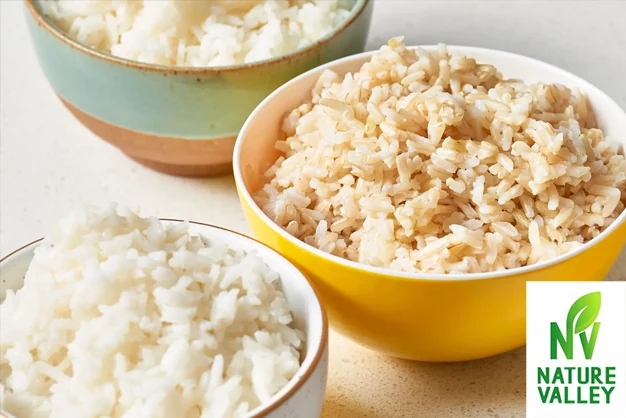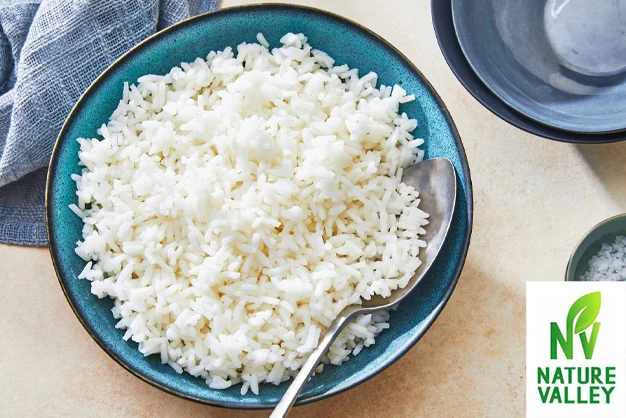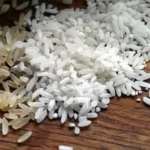What is the Difference Between Old Rice and New Rice? Rice is a staple food for millions of people worldwide, providing sustenance, flavor, and versatility in countless dishes. However, not all rice is the same. Among the many factors that differentiate types of rice, one key distinction is between old rice and new rice. This difference isn’t about variety but about the age of the rice grains after harvest. Understanding the unique characteristics of old rice and new rice can help you choose the best option for your culinary needs.
In this blog, we’ll explore what sets old rice apart from new rice, their respective qualities, cooking behaviors, and how to choose the right one for your meals. Additionally, we’ll highlight Nature Valley’s premium rice selection, which offers high-quality options for every rice lover. For the best rice products, visit Nature Valley’s rice selection.

Old rice vs. new rice
Old rice, also known as “aged rice,” refers to rice grains that have been stored for a prolonged period—typically one year or longer—after being harvested. This aging process allows the rice grains to lose moisture content, resulting in firmer, drier grains with enhanced cooking and flavor characteristics.
Learn more about our products: tabiat indian rice
Difference Between Old Rice and New Rice in Key Characteristics
- Low Moisture Content: Old rice has significantly lower moisture levels compared to freshly harvested rice, making it ideal for dishes that require separate, non-sticky grains.
- Firmer Texture: When cooked, old rice tends to retain its shape and texture better, resulting in firmer and fluffier grains.
- Enhanced Flavor: The aging process intensifies the nutty, aromatic qualities of rice, making old rice particularly prized in dishes like biryani or pilaf.
New rice, often referred to as “fresh rice,” is rice that has been harvested and consumed within a few months. It retains its natural moisture content, giving it a softer texture and slightly sweeter flavor. New rice is commonly used in dishes where a stickier or creamier consistency is desired.
Key Characteristics of New Rice
- High Moisture Content: The moisture-rich grains of new rice are softer and tend to clump together when cooked, making it ideal for sticky rice dishes or puddings.
- Soft Texture: New rice is naturally tender, which can be advantageous for recipes that call for softer rice.
- Subtle Flavor: Freshly harvested rice has a delicate and slightly sweet taste that complements simple dishes.
Read more: what is sadri rice?

Difference Between Old Rice and New Rice in Nutritional Comparison
The age of rice does not significantly alter its nutritional composition, but the moisture content and texture differences can influence cooking outcomes and preferences. Both old rice and new rice offer similar amounts of calories, carbohydrates, and proteins, making them equally nutritious.
Here’s a typical nutritional breakdown (per 100 grams of cooked rice):
| Nutrient | Old Rice | New Rice |
| Calories | 130 | 130 |
| Carbohydrates | 28 grams | 28 grams |
| Protein | 2.4 grams | 2.4 grams |
| Fiber | 0.3 grams | 0.3 grams |
| Fat | 0.2 grams | 0.2 grams |
The primary differences lie in texture, flavor, and cooking behavior rather than nutritional content.
Read more: what is basmati rice?
Cooking Differences Between Old Rice and New Rice
Cooking with old rice or new rice can yield vastly different results due to their moisture content and structural differences. Understanding these distinctions can help you perfect your recipes.
Cooking Old Rice
Old rice’s low moisture content means it absorbs more water during cooking. Here are some tips for cooking old rice:
- Water Ratio: Use slightly more water than you would for new rice to ensure the grains cook evenly.
- Soaking: Soak old rice for 20–30 minutes before cooking to help rehydrate the grains and improve texture.
- Fluffiness: Old rice cooks into separate, fluffy grains, making it ideal for biryanis, fried rice, and pulao.
Cooking New Rice
New rice’s higher moisture content makes it naturally tender and sticky. Here’s how to handle new rice:
- Water Ratio: Use less water compared to old rice, as the grains require less liquid to cook.
- Gentle Cooking: Avoid overcooking new rice, as its softness can turn mushy.
- Stickiness: New rice is perfect for dishes like sushi, risottos, or rice puddings that require a sticky or creamy consistency.

New rice is better or old rice؟
The choice between old rice and new rice depends on your cooking preferences and the type of dish you’re preparing. Here’s a quick guide:
Choose Old Rice If:
- You’re cooking dishes that require separate, fluffy grains (e.g., biryanis, fried rice, or pilafs).
- You prefer a nutty and aromatic flavor profile.
- You want rice that holds its shape well during cooking.
Choose New Rice If:
- You’re making sticky rice dishes like sushi or desserts like rice pudding.
- You enjoy a soft and tender texture in your rice.
- You’re preparing simple, everyday meals where the natural sweetness of fresh rice shines.
Culinary Uses of Old and New Rice
Both old rice and new rice have their unique applications in the kitchen. Here are some popular dishes that highlight their strengths:
Dishes That Shine with Old Rice
- Biryani: The fluffy texture of old rice is perfect for layering in biryani, ensuring that each grain remains distinct.
- Fried Rice: Old rice’s firm texture makes it ideal for stir-frying, preventing clumping or mushiness.
- Pilaf (Pulao): Aromatic old rice enhances the flavor and presentation of pilafs, where separate grains are essential.
Dishes That Shine with New Rice
- Sushi: The stickiness of new rice is perfect for holding sushi rolls together.
- Rice Pudding: New rice’s creaminess makes it ideal for desserts like rice pudding or kheer.
- Sticky Rice: For traditional Asian sticky rice dishes, new rice is the go-to choice.
Learn more about our products: canned tuna fish
The Role of Aging in Rice Quality
The aging process plays a significant role in determining the flavor, texture, and cooking characteristics of rice. Here’s how it impacts old rice:
- Moisture Reduction: Aging reduces the moisture content, allowing the grains to become firmer and more aromatic.
- Enhanced Flavor: Over time, the natural flavors of rice intensify, giving old rice its characteristic nuttiness.
- Improved Texture: Aged rice grains hold their shape better during cooking, resulting in a superior texture for many dishes.
Why Choose Nature Valley’s Premium Rice?
Whether you prefer old rice for its fluffy texture or new rice for its creamy consistency, Nature Valley offers high-quality rice products that cater to your culinary needs. With a focus on quality, sustainability, and flavor, Nature Valley ensures that every grain meets the highest standards.
Benefits of Choosing Nature Valley Rice
- Expert Sourcing: Nature Valley collaborates with trusted farmers to source the finest rice varieties, including aged options for premium flavor.
- Diverse Options: From aromatic long-grain rice to versatile short-grain varieties, Nature Valley has something for every recipe.
- Sustainability: By prioritizing sustainable farming practices, Nature Valley ensures that its products are good for both consumers and the environment.
To explore Nature Valley’s full range of rice products, visit their rice selection today.
Conclusion: Embrace the Versatility of Old and New Rice
Understanding the difference between old rice and new rice can elevate your cooking and help you choose the right grain for your dishes. While old rice offers firm texture and enhanced flavor, new rice shines with its tenderness and natural sweetness. Both have their unique strengths and applications, making them invaluable staples in the kitchen.
Whether you’re preparing a fragrant biryani with old rice or a creamy dessert with new rice, Nature Valley’s premium rice ensures that your meals are flavorful and nutritious. With their commitment to quality and sustainability, Nature Valley is your trusted partner for all your rice needs.
Explore Nature Valley’s rice selection and discover the perfect grain to suit your culinary creations.


